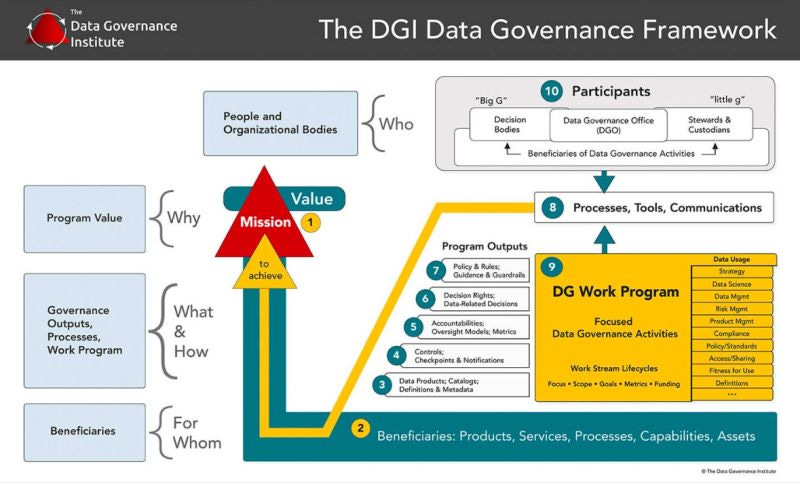Preparing Your Data Governance Journey for AI
Integrating AI into your business strategies isn’t just an option—it’s essential for staying competitive. But here’s the catch: the effectiveness of your AI initiatives hinges on strong data governance. If you're ready to unlock AI's full potential, it starts with preparing your data governance journey. Let’s explore how to set the groundwork for success in this exciting tech landscape!
While the above image might seem complicated, let’s simply the journey.
1. Understand the Importance of Data Governance
Data governance is the backbone of any AI strategy. It ensures that data is accurate, consistent, and secure, crucial for training reliable AI models. AI initiatives can lead to biased outcomes, security breaches, and compliance issues without proper governance.
2. Define Clear Data Governance Policies
Establishing clear policies is the first step in your data governance journey. These policies should cover data quality, stewardship, security, compliance, and lifecycle management. Ensure that these policies are well-documented and communicated across the organization.
3. Leverage AI for Data Governance
AI can significantly enhance data governance by automating classification, profiling, and monitoring. AI-driven tools can help identify data anomalies, ensure data quality, and maintain compliance. Implementing AI in data governance improves efficiency and reduces the risk of human error.
4. Build a Data Catalog
A data catalog is essential for managing and discovering data assets. It helps organize data, making it easily accessible for AI projects. A well-maintained data catalog ensures that data is properly classified, curated, and documented, which is crucial for creating a solid foundation for AI.
5. Foster a Data-Driven Culture
Promote a culture where data is valued and treated as a strategic asset. Encourage collaboration between data scientists, data engineers, and business stakeholders. Provide training and resources to ensure everyone understands the importance of data governance and their role in it.
6. Monitor and Adapt
Data governance is not a one-time effort but an ongoing process. Continuously monitor your data governance practices and adapt them as needed. Use AI tools to track data usage, compliance, and quality. Regularly review and update your policies to meet changing regulations and business needs.
Preparing your data governance journey for AI is a strategic investment that can drive significant business value. You can ensure that your AI initiatives are successful and sustainable by establishing clear policies, leveraging AI tools, building a data catalog, fostering a data-driven culture, and continuously monitoring your practices.
Any additional suggestions?



